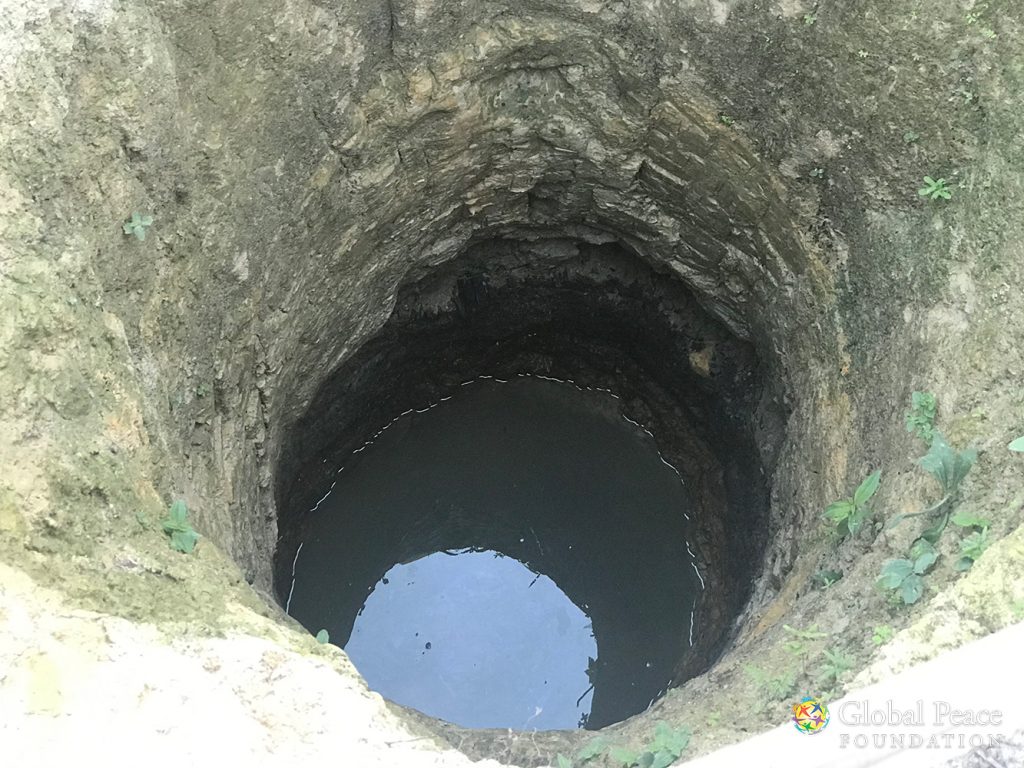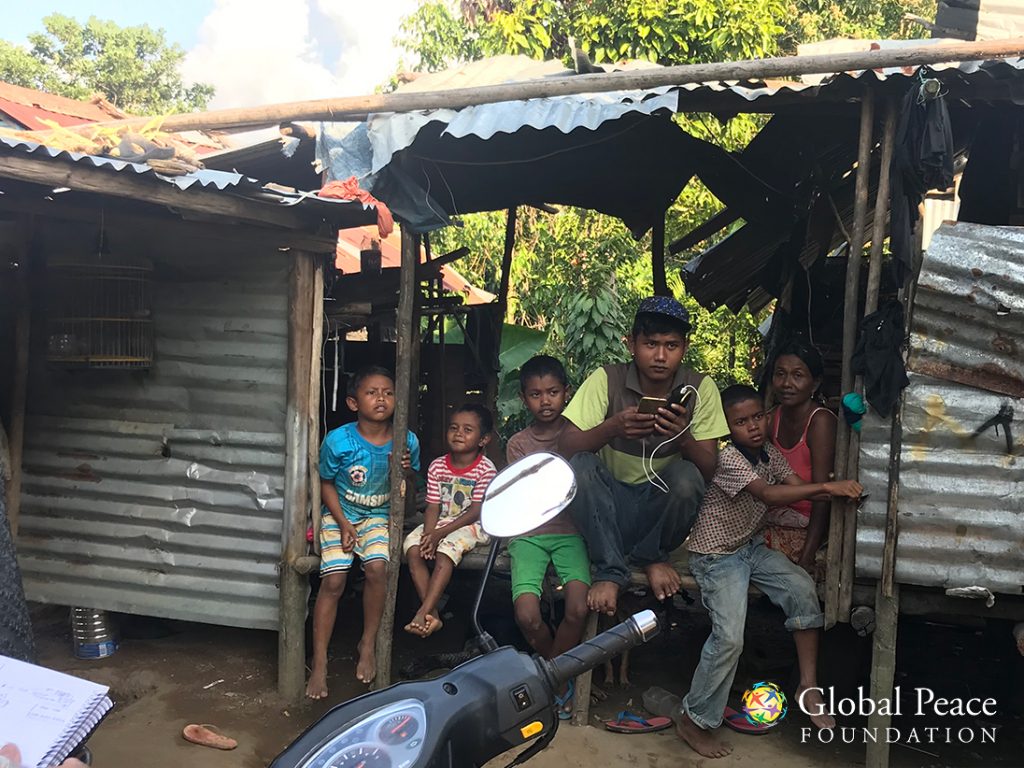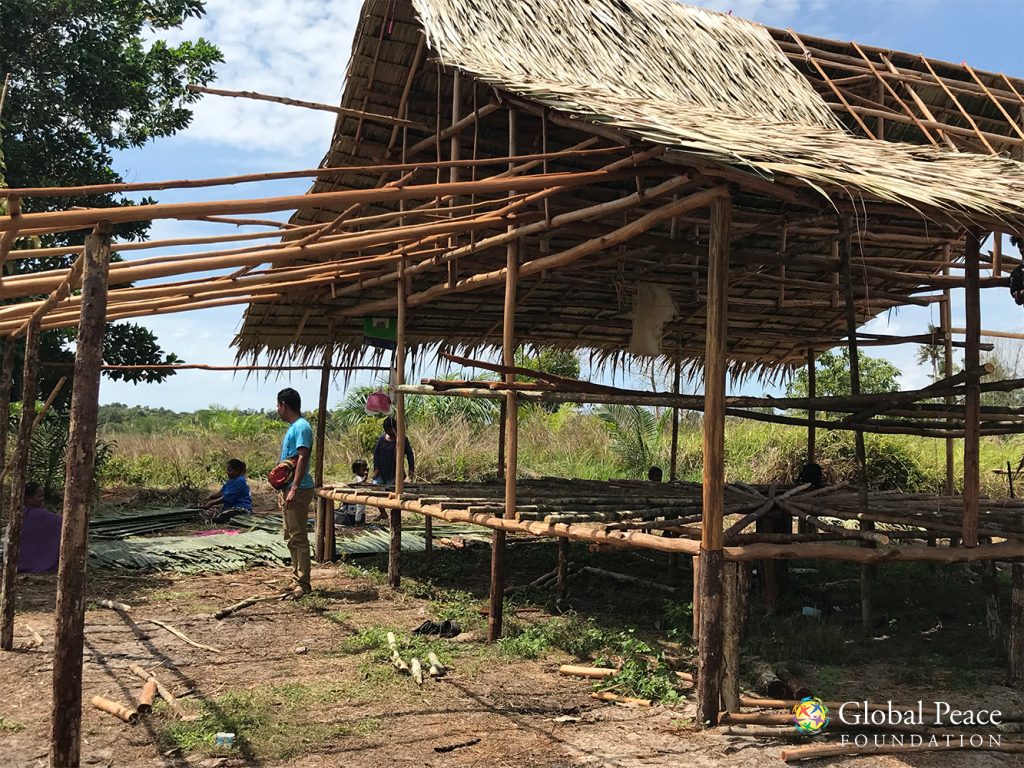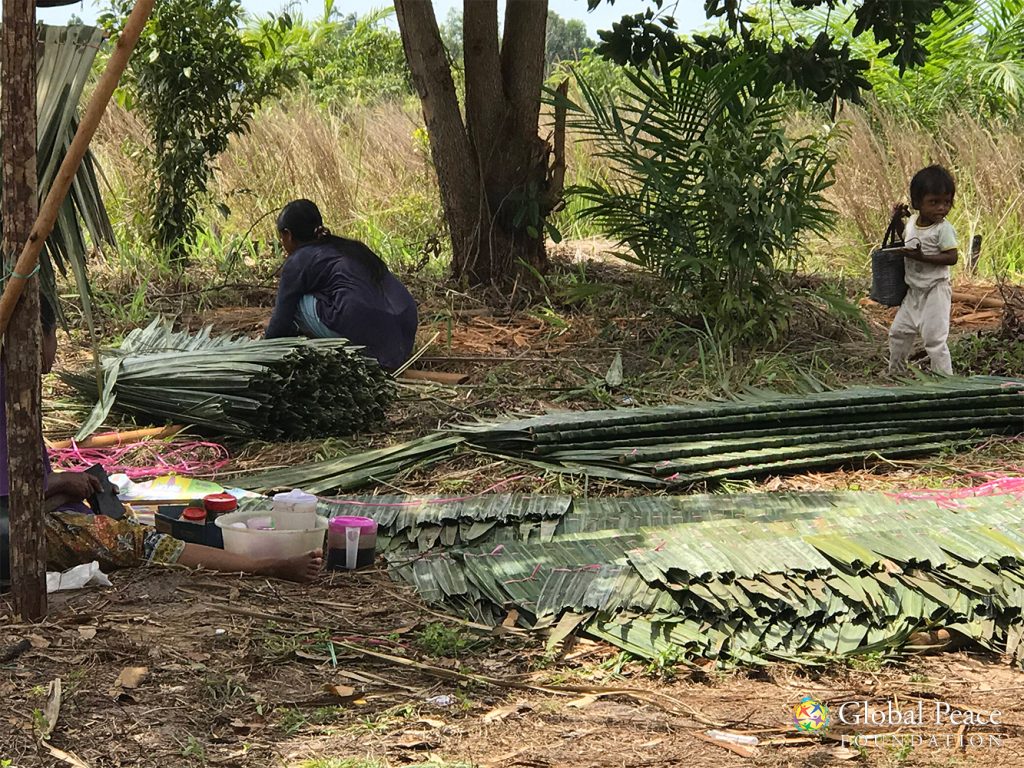Intern Reshna shares her experience and thoughts on visiting an Orang Asli village for the first time.
Velocity (ms−1) = Distance travelled (m) / time taken (s)
Familiar? We have come across this equation a few times when we were in high school or during our pre-university education. Most of the time, we mulled over how to use this equation in our everyday activities. However, I have formulated another compelling equation to add value to life.
Minimal resources + Self sufficiency = SURVIVAL
This equation is what the Orang Asli (OA) tribes live by, driving them to make do with scarce choices and supplies to provide for themselves, their families and sometimes even their entire village.
Recently, my trip to Pahang with the Global Peace Foundation team was an eye-opener helping me to truly understand the plight of the OAs. I was remiss of the actual struggles they faced in receiving basic resources such as clean water, electricity and an education. Most of these OA villages are situated in the remote parts of the oil palm estates far from the hustle and bustle of towns, miles away from restaurants and shops, as well as hours away from schools.

Yet, when I visited these villages and its occupants for the first time, I was confounded by how simple and contented they were with their lives. While they appeared underfed and physically incapable of heavy labour, the adage “do not judge a book by its cover” has never resonated with me as it did, when I witnessed OA women carrying buckets of water up a hill on their heads. Here we are carrying weights as a lifestyle choice, while they do it out of necessity.
During dry spells, the wells that the OAs have dug for themselves dry up and in the rainy seasons this water source becomes murky and sadly undrinkable. Still they do not gripe about what they lack. They, however, look within themselves and rely on their strength to get through each day.
We, on the other hand, are privileged to be able to contact an external source if we should encounter water and electrical woes. We speak of resilience, but these OAs live it!

Building a community centre at Kampung Berlebas 
OA woman weaving nipah leaves for roofing
Furthermore, I observed how inventive they are. Using limited materials gathered from around their villages they can create and build basic but much required structures. For example, in Kampung Berlebas, a wooden community “centre” was being erected for the villagers to gather. While the men busied themselves building the structure, using rattan strips to tie woods together, the women wove nipah leaves together using raffia to build a roof. This collaborative effort shows no gender discrimination. What is important is completing the task at hand for the benefit of all.
Meanwhile in Kampung Api Larat, the OAs had built an efficient piping system to direct water into a hut. Before they bathe, they will collect the water and pour it into a bucket near the well, which will then flow through a long pipe into more buckets in this hut. This saves time and prevents them from laboriously collecting water from the well. Both these villages and its villagers have demonstrated how some OAs are gifted and self-taught engineers.
During the trip, I was faced with a conundrum because I could not fathom what made these marginalised groups less worthy of basic human rights and which require non-profit organisations like Global Peace to lend a helping hand. Not long after, I was asked a thought-provoking question by a distinguished photographer who had joined us for a project. “Why do you think these OAs do not want to make a change and come out of the rut they are in?”
I pondered over this question and remembered the words of a villager from Kampung Berlebas named Cik Bidah. When we asked her if she would be interested in a water filter, she replied, “Of course! If it is free and there are no strings attached, we would gladly accept one. We do not shy away from help, but never pursue it as we have managed for years using the resources that are available.”
Hence, my response to the photographer, “Well…these OAs do not see themselves being in a rut. That is our perception of their predicament. They have lived this way for many generations and this has become a norm – to survive each day and not focus on the future.” This attitude towards life echoes the equation I had derived above.

Their traditional way of living is very unlike our mainstream lifestyle and yet they feel secure. We often watch movies and read books about a dystopian future where a hero or heroine must undergo a set of obstacles to ensure the survival of their family and themselves but here in our own backyard so to speak, are people who must overcome these challenges daily.
I have always been aware of how fortunate I am able to receive basic amenities, but it was not until I saw the OAs that I realised that I am indeed privileged. These OAs would not ask for help but why should they? Why must we wait until we hear about the deaths of OAs due to polluted waters and other reasons before acting? While I am unable to make everyone understand the plight of the OAs through an article, I am glad that I witnessed it first hand and I am part of the Global Peace team who are doing their best to provide for these OAs.
Written by Reshna Reem Ganesan








